You'd never believe that there was an abandoned island in the heart of New York City, would you? Well, there is. It's not a place you'd usually stumble upon in your day-to-day life, but occasionally people do find themselves here, such as brave kayakers and urban explorers. Here's the story behind this haunting place.
Abandoned North Brother Island, New York City
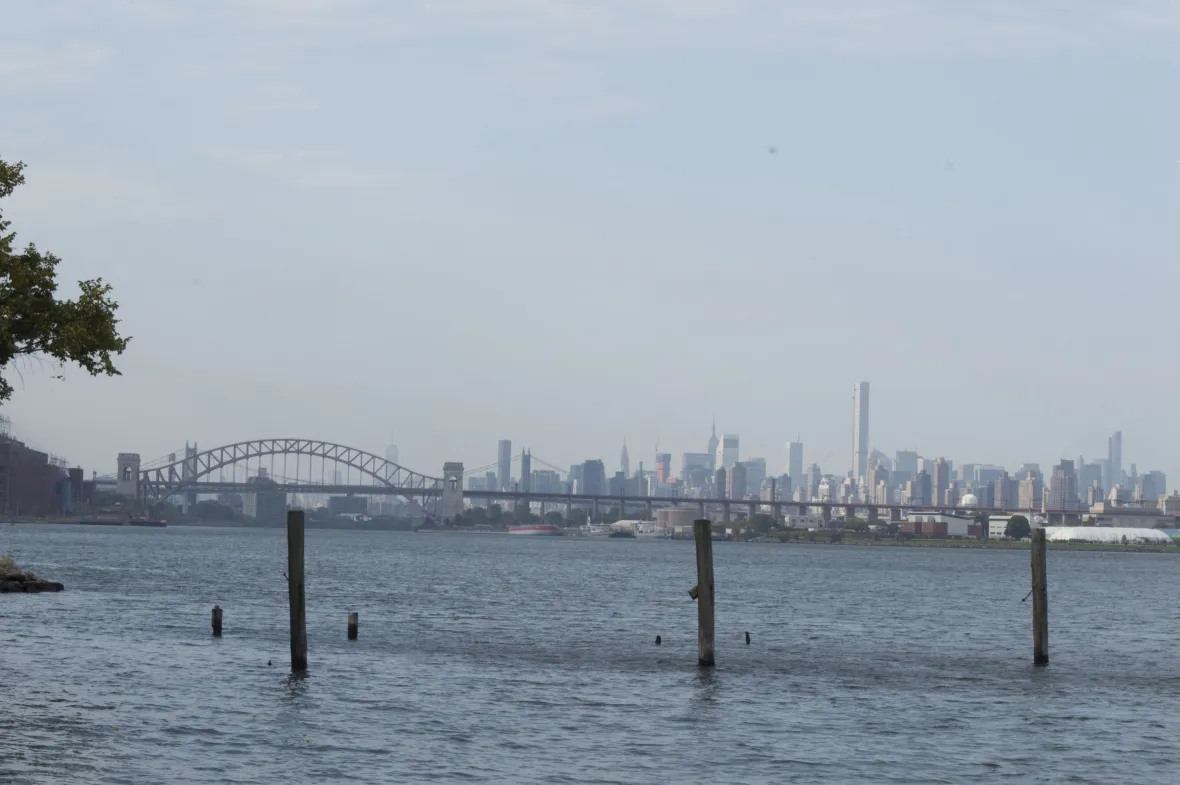
Well, there is. In a city where real estate prices and the underlying cost of land are astronomically high, there's one place where the developers still can't tread. It's called North Brother Island.
North Brother Island has an interesting history as a sanitarium, a rehab center for typhoid fever and smallpox victims, and a housing site for veterans. But today, it is being slowly reclaimed by the roots of the eerie island as an important bird-breeding habitat.
ADVERTISEMENT
The River That Isn't Technically A River
ADVERTISEMENT

ADVERTISEMENT
The East River of New York is where you'll find our abandoned island but what you may not know is that the East River isn't a river at all. It's a tidal estuary and is purely salt rather than fresh water.
ADVERTISEMENT
It runs from Long Island Sound at its northern tip and stops at Upper New York Bay at the southernmost point. For a long period of time it was the heart of the maritime trade in New York and it was once the busiest sea lane in the city. This is, of course, no longer the case and the East River is far less busy today.
ADVERTISEMENT
The Haunted Feel Of The Island
ADVERTISEMENT
ADVERTISEMENT
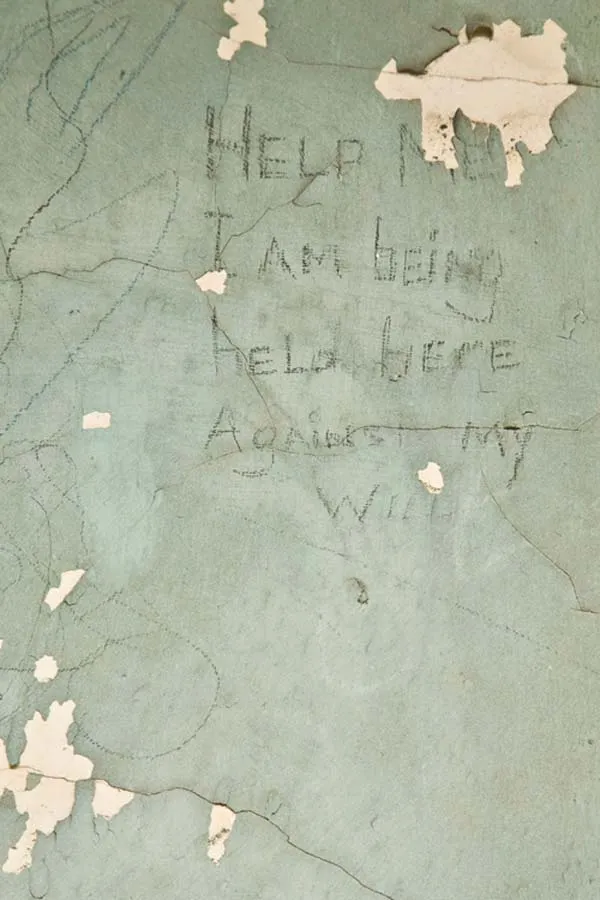
ADVERTISEMENT
North Brother Island was abandoned in 1963 after being used as a sanitarium and rehab center for victims of typhoid and smallpox nearly 80 years up to that point.
ADVERTISEMENT
It had been such a busy place that at one point in the island's history that there were more than 40 buildings covering the island -- including a hospital, a church, a morgue, dormitory style accommodation, a lighthouse and more. Now, as you will see, the island wreaks of a forgotten, haunting and eerie presence filled with rust, dust and fossilized furniture that was used so long ago. Broken and eroding chairs, dusty old books with ripped up pages coated with aged ink, stained and busted bath tubs filled with debris and broken windows, are just some of the things you will find on the island.
ADVERTISEMENT
The Tuberculosis Pavilion
ADVERTISEMENT
ADVERTISEMENT
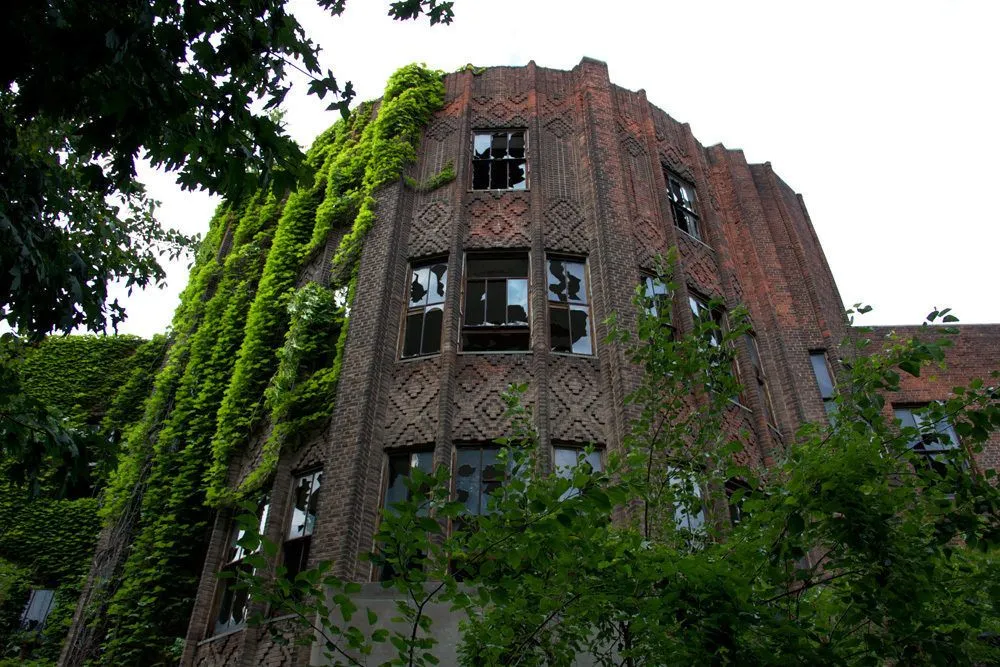
ADVERTISEMENT
Here we see the Tuberculosis Pavilion Wing that was added on in 1941 in its current state. It's hard to imagine that this building with busted windows and growing vines once saved thousands of lives that were suffering from the awful disease of tuberculosis, isn't it?
ADVERTISEMENT
With one of the most difficult recovery processes in medicine, victims of the disease were quarantined off in these quarters as they remained infectious until complete recovery. Although at the time the wing was very much necessary, the superstructure was soon rendered useless due to the introduction of vaccination programs and effective antibiotic treatments; it was closed just two years after its arrival.
ADVERTISEMENT
An Inside Look
ADVERTISEMENT
ADVERTISEMENT
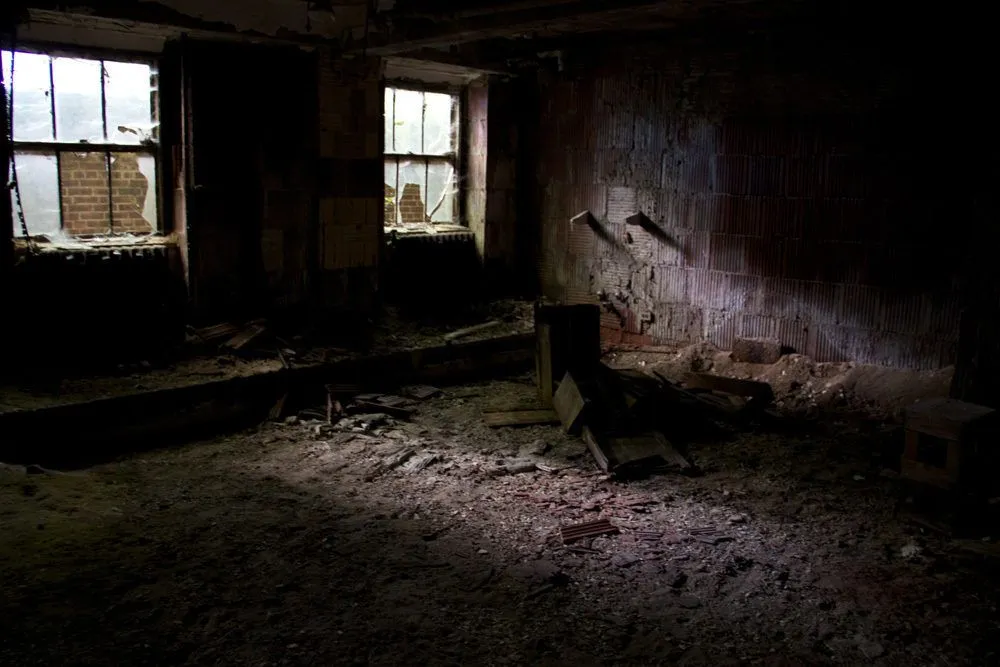
ADVERTISEMENT
With a quick sneak peek at the horrible destruction that overcame the once clean and neat walls of the pavilion, it resembles the aged rubble of a war zone after an explosion. Considering the wing was not used after 1945, the collected dust, rust and antique furniture is quite astounding.
ADVERTISEMENT
Although both residents and tourists have known about the abandoned location for years, the lack of graffiti to the foundation across the island is quite remarkable. Even with broken windows due to the forceful "nature" of the constantly growing vines (or random visitors,) people have relatively kept their appropriate distance when visiting.
ADVERTISEMENT
An Earthy Floor
ADVERTISEMENT
ADVERTISEMENT
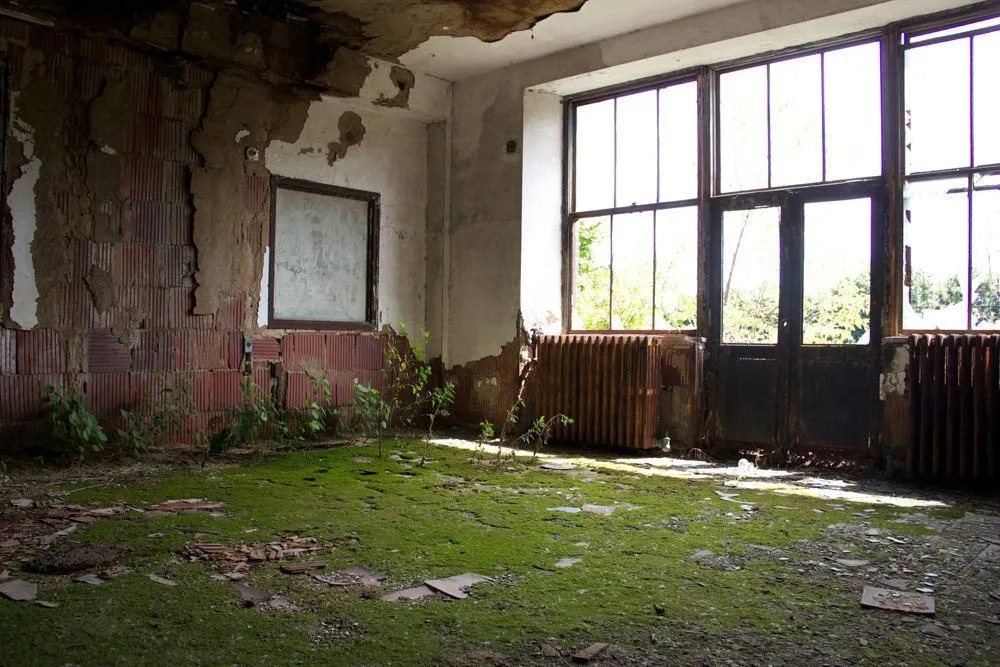
ADVERTISEMENT
Another room inside the pavilion wing displays a somewhat "Earthy" texture covering the grounds, matching the rest of the island. With roots busting from the cracks of the floor, it's strange to think that none of this decor existed over 40 years ago.
ADVERTISEMENT
Take a close look at the intense damage on both the surface and interior of the walls and ceiling. Less than 50 years before, this wing was dedicated to improving and saving the infected lives of those suffering from the disease. And, now we see almost a garden-like setting surrounded by the ruins of a foundation that has still managed to stay somewhat intact.
ADVERTISEMENT
The X-Ray Room
ADVERTISEMENT
ADVERTISEMENT
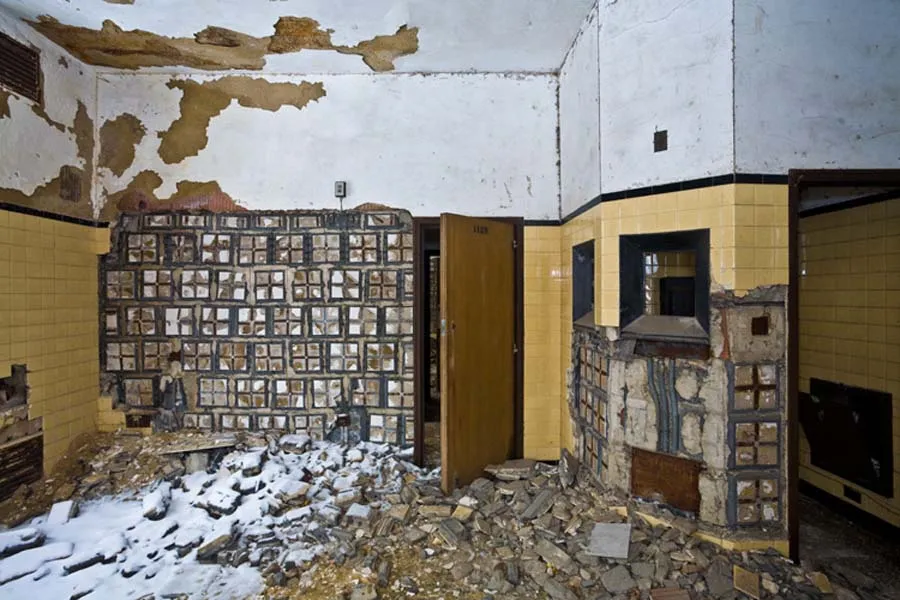
ADVERTISEMENT
Formerly the x-ray portion of the pavilion, this has now become a tile sanctuary on the first floor of the medical wing. The control room on the adjacent left side does not reveal as much damage as you would expect, but the wall has significantly taken a beating.
ADVERTISEMENT
Once yellow tinted from the ceramic tiles overlapping one another, has revealed square lead blocks that line the now-exposed surface of the demolished walls. Again water damage is found when looking at the upper walls and ceilings toward the right of the room, although we are surprised that this room stayed in tact at all over the years.
ADVERTISEMENT
An Abandoned Auditorium
ADVERTISEMENT
ADVERTISEMENT
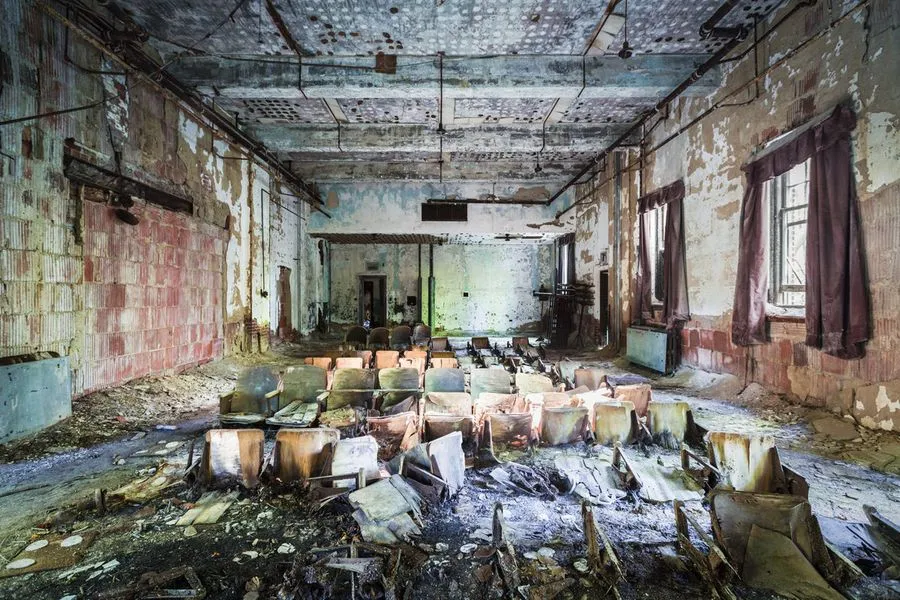
ADVERTISEMENT
One of the most momentous rooms left on the island, still left to its crumbling roots, is the auditorium located in the North Brother "School" that was originally the island's Services Building. As an environment that once functioned in the benefit of the children and teachers, parcels of collapsed and destroyed furniture remain along the grounds of the room.
ADVERTISEMENT
If these corroded walls could speak, we wonder what they would reveal about this former "services" chamber. Most likely used to collect the hundreds of sick children that inhabited the island, the institution was once vital to the system implemented on the abandoned piece of land.
ADVERTISEMENT
One For The Books
ADVERTISEMENT
ADVERTISEMENT

ADVERTISEMENT
Covering a majority of floors, abused and abandoned books lay with lost and meaningless words that once meant everything to the residents and employees of the island. Here we see what is left of the children's ward, which was later turned into a library and annex after the tuberculosis pavilion was turned into a drug treatment center.
ADVERTISEMENT
As previously mentioned, when the victims of tuberculosis were being seen for treatment, their highly contagious natures kept them under constant supervision until the disease was entirely treated. With what could range from months to years, the children must have felt quite restless and likely used books as their main source of entertainment. With this logic, it makes total sense to have turned this section of the island into a library.
ADVERTISEMENT
Holy, Mossy Remains
ADVERTISEMENT
ADVERTISEMENT
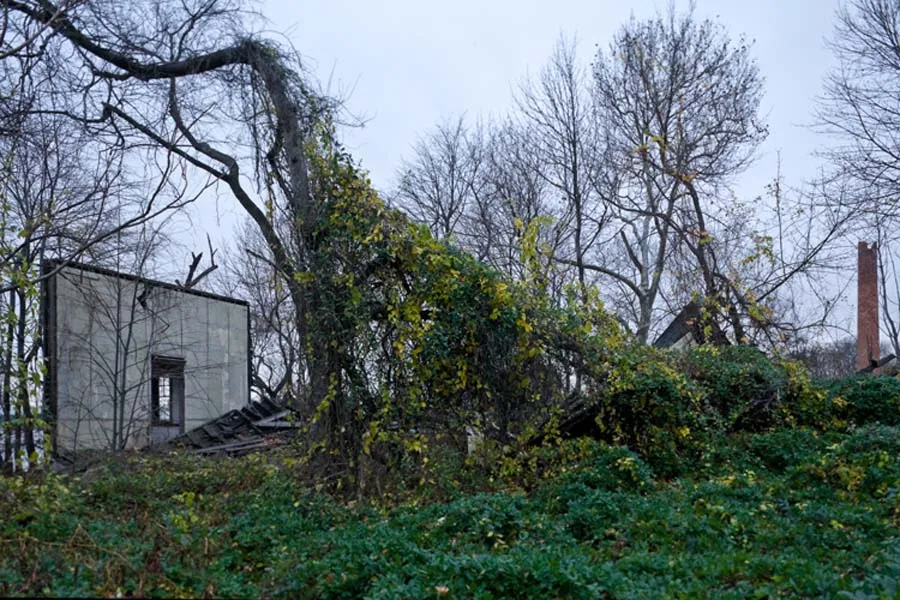
ADVERTISEMENT
It is hard to make out that this used to be the island's second chapel; now one standing wall, bits of the floor and a moss covered tree, the chapel has almost completely disappeared. Made of wood, the structure has practically vanished into the aggressively growing forest that is slowly swallowing the island whole.
ADVERTISEMENT
A community built under such stress and heartbreaking and life-threatening conditions surely needed a source of faith and prayer; which is why they had two. Although the establishment looks as if it was never valued, we understand that the city was nothing without it. Now that we have seen what North Brother has become today, let's take a look back on its interesting history.
ADVERTISEMENT
Origin Of North Brother
ADVERTISEMENT
ADVERTISEMENT
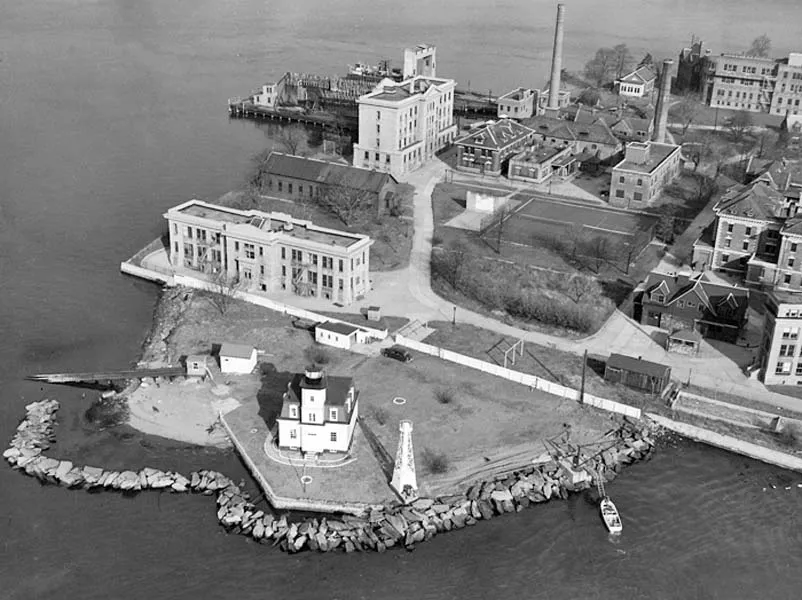
ADVERTISEMENT
While North Brother Island was in use, the victims of smallpox would only remain on the island while they were in their contagious period or they would be buried there. Once they had recovered they were permitted to leave the island and return home.
ADVERTISEMENT
A program of vaccination based on the work of Edward Jenner, who had discovered that infection with a weak version of the disease, cowpox, provided an effective barrier that prevented people from catching full-blown smallpox, had been run out worldwide and effectively eliminated the disease globally. Smallpox victims could be removed from the city and placed in the sanitarium on the island where they would be cared for by medical staff who had already suffered from and recovered from the disease.
ADVERTISEMENT
Typhoid And The Island
ADVERTISEMENT
ADVERTISEMENT
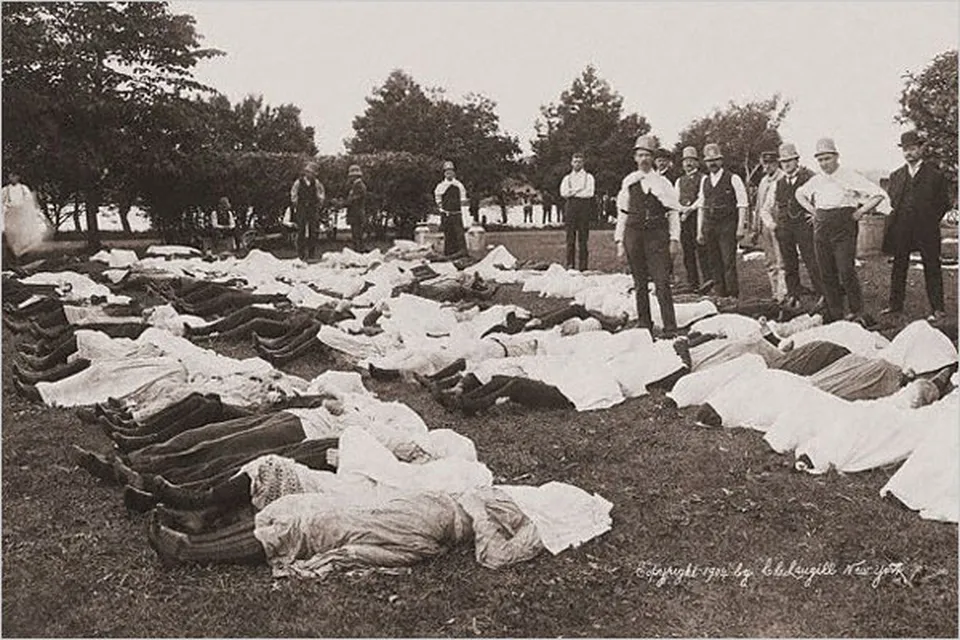
ADVERTISEMENT
Typhoid, unlike smallpox, is a peculiar disease that breeds a much smaller amount of casualties; although it kills 10% of victims or more if left untreated. It is caused by a particular strain of the salmonella bacteria called salmonella typhi.
ADVERTISEMENT
Most people when infected with salmonella typhi become sick shortly afterwards. They develop a fever (typhoid fever from which the disease takes its name) and then a rash followed by a wide-range of fairly unpleasant complications. Assuming that the person makes it through three weeks of infection, then it is likely that the disease will be beaten off by the body's immune system and the victim will return to health. However, there are some rare people that don't get sick from salmonella typhi.
ADVERTISEMENT
The Island's Most Infamous Resident, Typhoid Mary
ADVERTISEMENT
ADVERTISEMENT
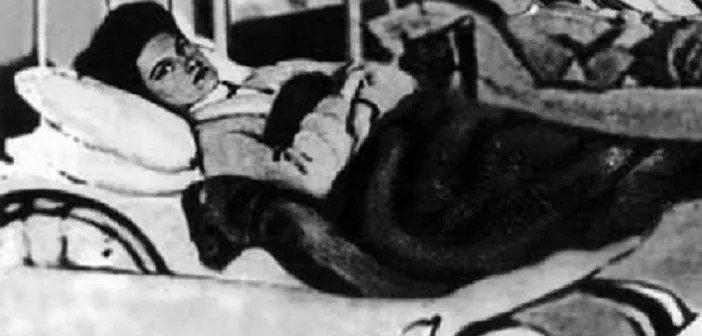
ADVERTISEMENT
Mary Mallon didn't get sick from salmonella typhi. Instead, she found herself as an asymptomatic carrier of the disease. What that means is that Mary would never get sick from typhoid but was able to infect other people by passing on her infection.
ADVERTISEMENT
She became known as "Typhoid Mary" for the large numbers of people that she infected in New York while working as a cook. She refused to believe that she was responsible for the outbreaks and she was eventually forcibly quarantined on North Brother Island for more than 20 years after refusing to stop working as a cook.
ADVERTISEMENT
Typhoid Mary Dies On The Island
ADVERTISEMENT
ADVERTISEMENT
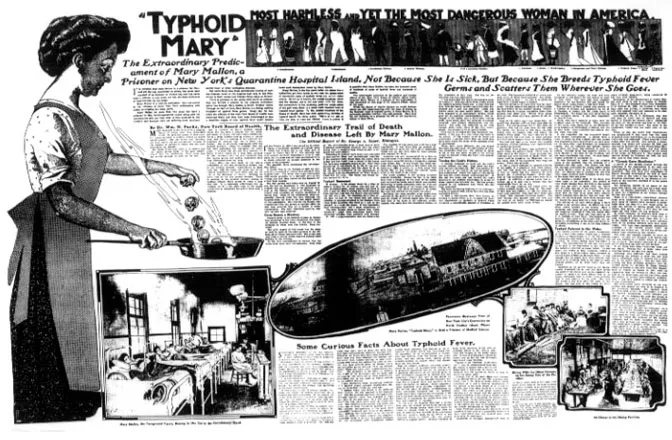
ADVERTISEMENT
Mary Mallon's legacy is a harsh one. The infections that she caused because of her refusal to believe that she was a typhoid carrier, killed at least three people. However, it's estimated that she may have been the cause of over 50 deaths as tracking her total impact on public health was mired with problems.
ADVERTISEMENT
In 1932, Mary was working as a technician on the island when she had a stroke which left her completely paralyzed. She died in 1938 of pneumonia. After her death, an autopsy discovered typhoid bacteria still happily living in her gallbladder. This was 100% proof of her carrier status.
ADVERTISEMENT
Tuberculosis- Another Serious Problem
ADVERTISEMENT
ADVERTISEMENT
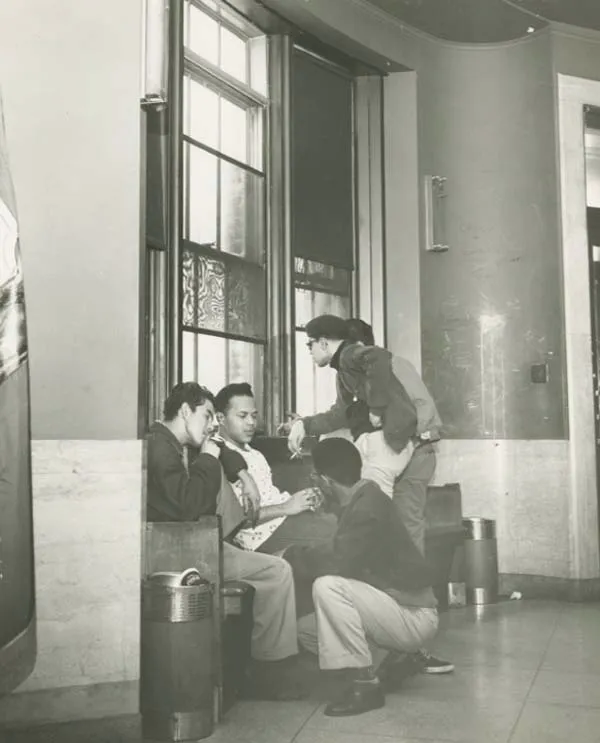
ADVERTISEMENT
Tuberculosis, another serious disease treated on the island, is a bacterial infection which causes the destruction of lung tissue; it is spread from person to person by airborne means.
ADVERTISEMENT
The disease can be vaccinated against and the vaccine is highly effective. However, again due to the costs of vaccination programs - many people are not immunized against tuberculosis even today. People who smoke or who have HIV are particularly at risk of become infected with tuberculosis. The disease can be treated through the use of antibiotics but there are growing numbers of antibiotic-resistant tuberculosis and in 2014 nearly 10 million people contracted tuberculosis and nearly 1.5 million people died of it.
ADVERTISEMENT
Not Just A Sanitarium
ADVERTISEMENT
ADVERTISEMENT
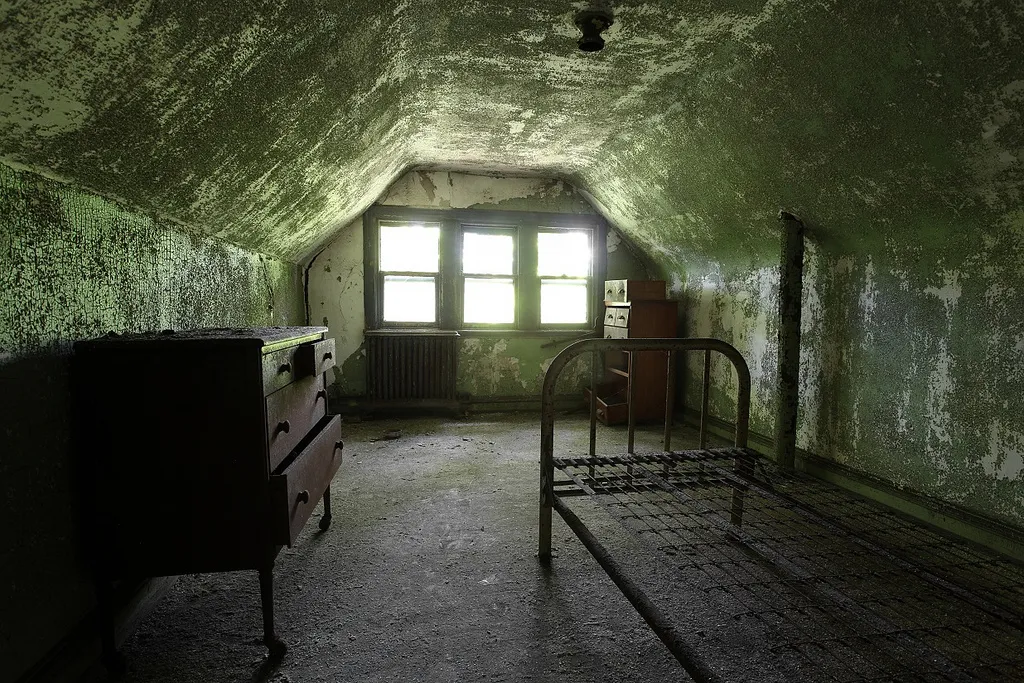
ADVERTISEMENT
In the last years of its existence however, North Brother Island became more than a treatment facility; it became a home to service people and their families like this attic room that still remains in tact.
ADVERTISEMENT
World War II had taken its toll on many people and war veterans often found themselves struggling. As the diseases that North Brother Island was built to defend against went into decline in America, the island was used to assist those in need of housing. It would have been an attractive place dotted with roads, lawns and buildings and families would have thronged the streets, enjoying the facilities of their new New York home.
ADVERTISEMENT
The End Of An Era
ADVERTISEMENT
ADVERTISEMENT
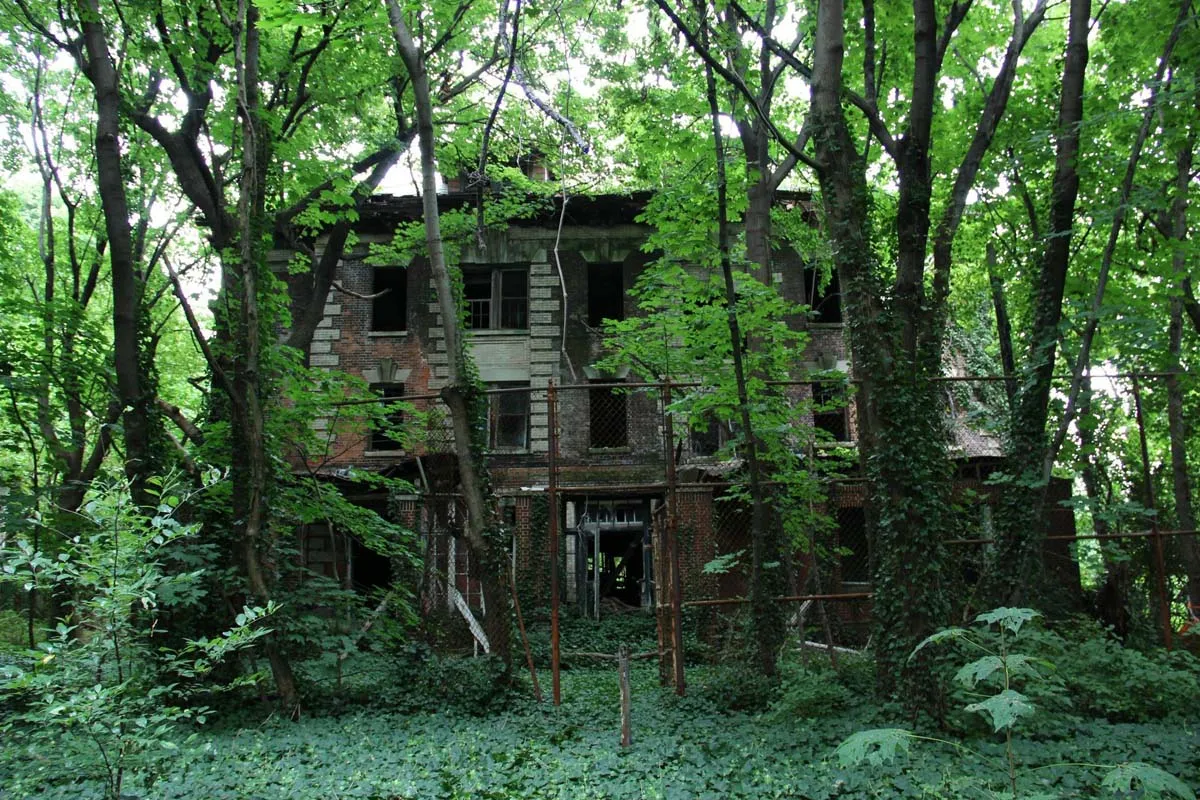
ADVERTISEMENT
North Brother Island began to fall into disuse in the 1950's. The residents felt that it was impractical to live on the island and work in New York, which required an irregular ferry service to shuttle them back and forth.
ADVERTISEMENT
The city, on the other hand, was more concerned about the costs of maintaining North Brother Island. There was plenty of cheap real estate on the mainland back then and the city was subsidizing the ferry service. It was decided to relocate the remaining families and heroin rehab patients back to New York proper and to abandon the island to nature.
ADVERTISEMENT
The Island Today
ADVERTISEMENT
ADVERTISEMENT
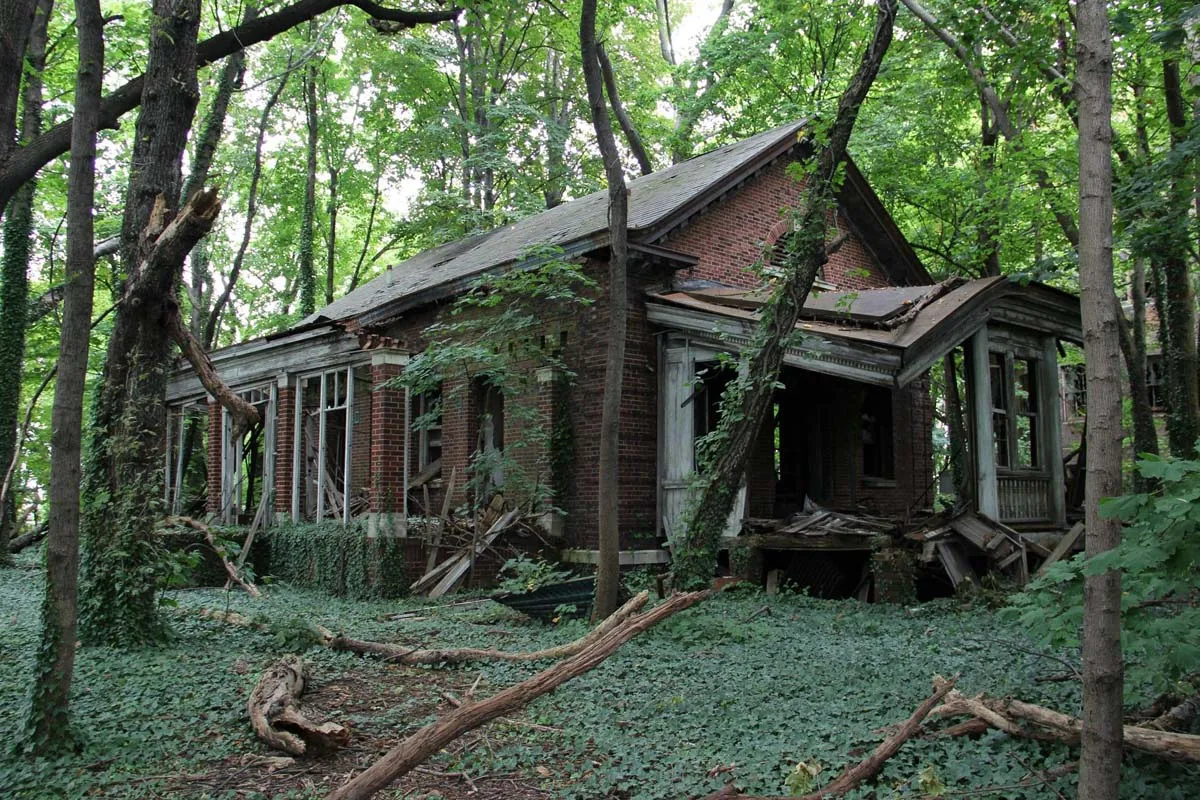
ADVERTISEMENT
Fast forward 40 years to vines spread across the island engulfing the buildings slowly but surely; this island was forgotten for quite awhile. In the 70's, it became a popular boating spot where light vandalization did occur to the 26 individual foundations that are found on the island.
ADVERTISEMENT
However, within the last 11 years or so, the island along with 17 of the other islands surrounding the state of New York, has been used by the New York City Audubon as a Weather Bird Breeding environment.
ADVERTISEMENT
The Bird Sanctuary
ADVERTISEMENT
ADVERTISEMENT
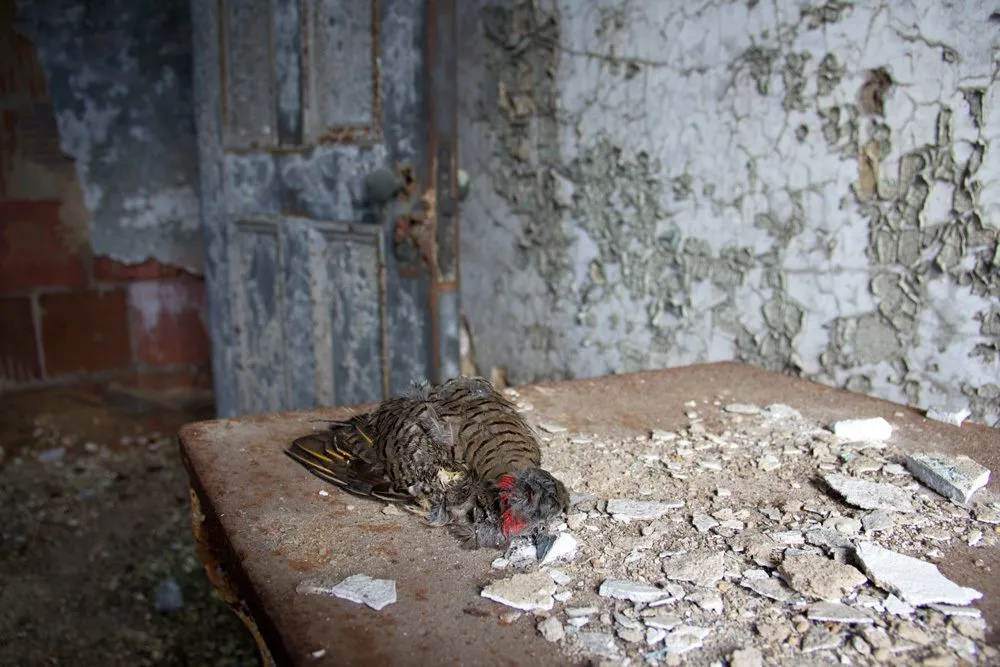
ADVERTISEMENT
Now a Colonial Weather bird nesting habitat for Black-Crown Night Herons and other species of its nature, North Brother is a site for breeding bird activity along with its South Brother mate island that are both very sensitive to the public.
ADVERTISEMENT
Seeing that the buildings have been significantly soiled by nature itself, the physical atmosphere of the island is just too perfect to not be utilized as a bird sanatorium. Although, sadly as it once was home for these types of birds, in more recent years a significant decline in breeding has been found.
ADVERTISEMENT
The General Slocum Disaster
ADVERTISEMENT
ADVERTISEMENT
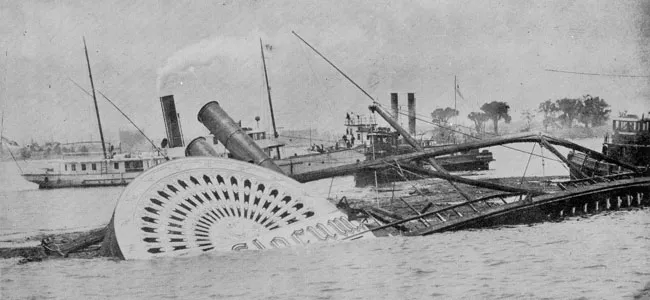
ADVERTISEMENT
North Brother Island's tragedy wasn't limited to the deaths caused by illnesses like Typhoid and Smallpox. It was also the setting for a horrible, freak accident that caused the death of over 1,000 people.
ADVERTISEMENT
On June 15, 1904 the PS Slocum, a sidewheel passenger ship, was chartered by the St. Mark's Evangelical Lutheran Church for $350.00. It was supposed to be a fun-filled day outside of the city for the passengers of the ship, which included mostly women and children from the German-American community of the Lower East Side. The ship was supposed to travel from New York City to the North Shore of Long Island, but it would never make it there.
ADVERTISEMENT
A Fire Broke Out On The General Slocum
ADVERTISEMENT
ADVERTISEMENT
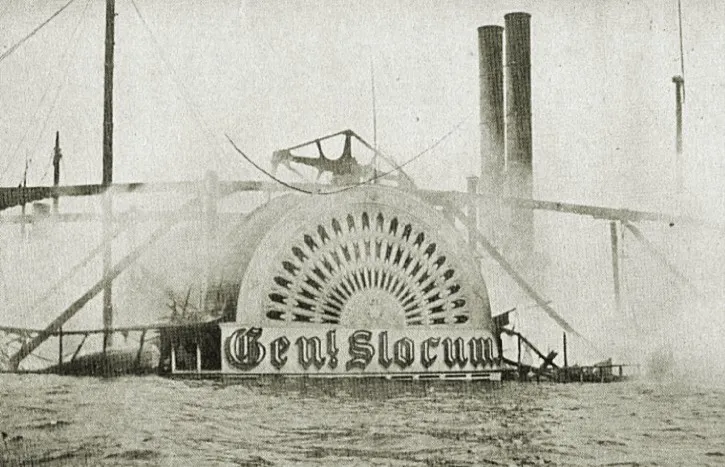
ADVERTISEMENT
As the PS Slocum made its way up the East River, things turned badly almost immediately. While no one is exactly sure how the fire broke out, we do know that it spread rapidly within a half hour of leaving the dock at around 9 a.m.Most of the passengers on the ship couldn't swim. A panic broke out as the passengers faced either being burned alive or drowning.
ADVERTISEMENT
Captain William Henry Van Shaick steered the ship towards North Brother Island, but it was too late. Only 321 passengers would survive out of the 1,358 on board. The final death count totaled 1,021, and many of the bodies washed up on shore within the next week. This disaster was the next largest death toll in the United States next to 9/11.
ADVERTISEMENT
The Aftermath Of The General Slocum Tragedy
ADVERTISEMENT
ADVERTISEMENT
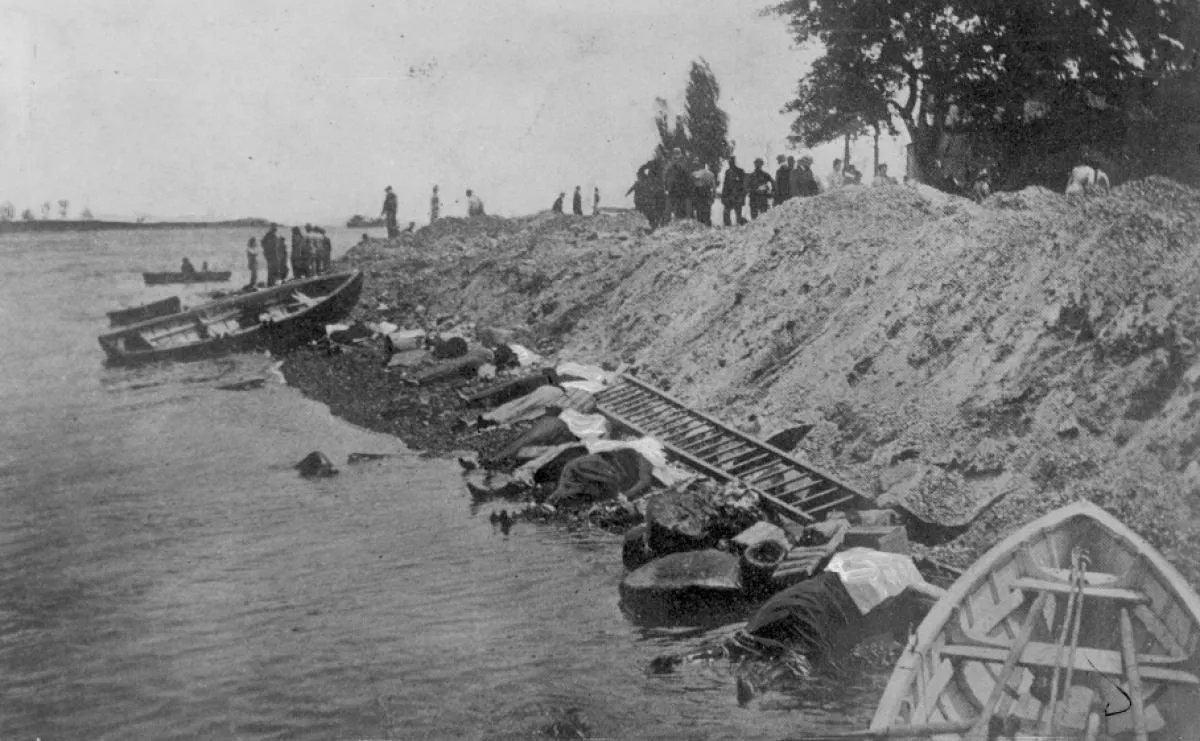
ADVERTISEMENT
Captain William Henry Van Schaick was held responsible for the accident. It was widely reported that he didn't bring the ship to shore for insurance reasons. Onlookers could see the burning ship just off shore and wondered why he didn't come back to land. Instead of turning around and docking the ship, he sailed it to North Brother Island. According Van Schaik, gas tanks and lumber yards near 130th Street, where the boat was burning right off shore, made docking there dangerous.
ADVERTISEMENT
Van Schaik was found guilty of criminal negligence because he failed to maintain the fire drills required by law. He was sentenced to 10 years of hard labor, and ended up serving only a portion of his sentence at Sing Sing prison. He was pardoned by President William Howard Taft in 1911.
ADVERTISEMENT
The Nurses' Home
ADVERTISEMENT
ADVERTISEMENT
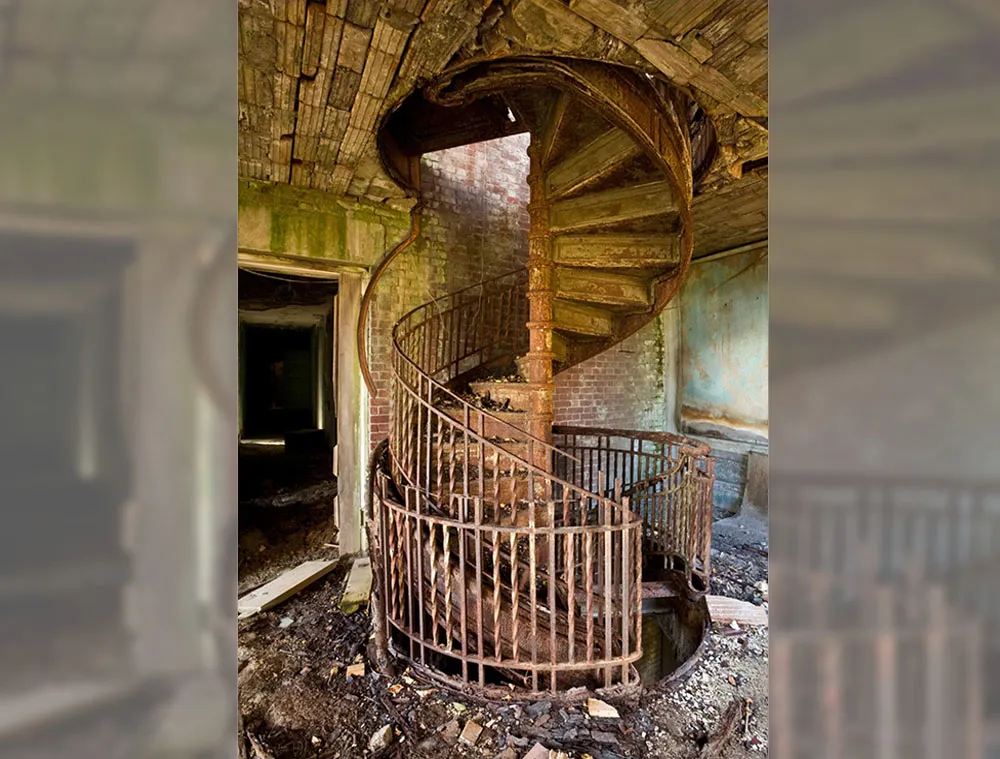
ADVERTISEMENT
The nurses' home had stunning architectural features like the cast iron staircase that still stands today. This staircase connected three contiguous floors on the oldest portion of the Nurses' home.Today, the Nurses' home is one of the creepier buildings on the island. Radiolab, who managed to visit the island in 2011, saw something rather unsettling within the crumbling walls.
ADVERTISEMENT
The building may have been taken over by nature, but humans were definitely there in the sort of recent past. The outer door was perforated with bullet holes, but these bullet holes weren't entrance wounds. Someone was shot at from inside the nurses' home. What exactly happened remains a mystery.
ADVERTISEMENT
Vines Threaten the Bird and Tree Population
ADVERTISEMENT
ADVERTISEMENT
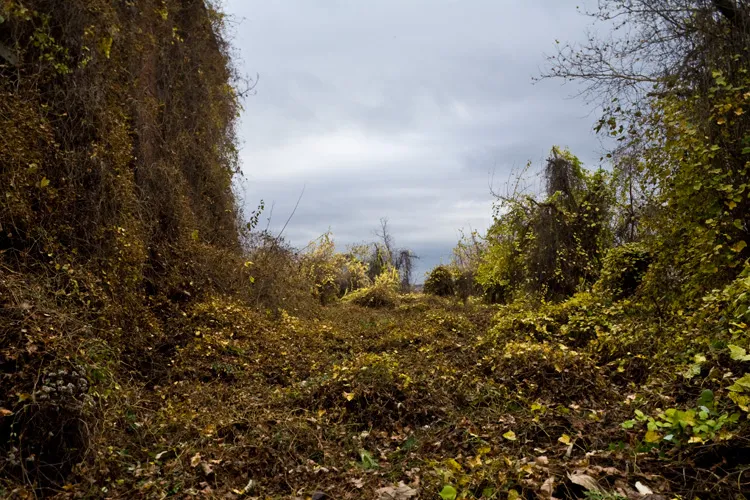
ADVERTISEMENT
The southern side of the Nurses' home is completely covered in vines. It's almost hard to tell that the building exists at all. Unfortunately, as nature takes back the land, it also threatens the natural tree and heron population.The wall pictured above is covered with kadzu, a type of vine that's not native to the island. This is, of course, impacting the structural stability of the building – but what does it matter if it's completely uninhabited.
ADVERTISEMENT
The problem here is that kadzu is suffocating the native trees that grow on the island. It's also threatening the homes and breeding patterns of the herons that live there.
ADVERTISEMENT
Odds and Ends in the Maintenance Building
ADVERTISEMENT
ADVERTISEMENT
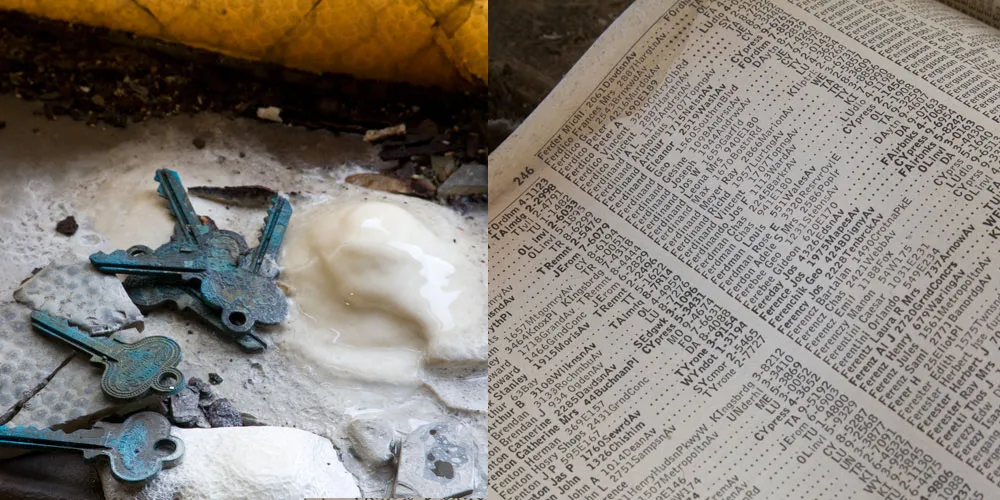
ADVERTISEMENT
Perhaps some of the most interesting parts of exploring a forgotten world are the smallest details. In the above image, you can see keys that were used to access various buildings on the island. These keys were found in the maintenance building that still has various bits and bobs.
ADVERTISEMENT
As you can see, chemicals have altered the appearance of the building. The keys are resting next to a chemical stalagmite. Within the maintenance room, you can also find a very old phonebook that’s almost entirely intact. The phone numbers in the book certainly don't look like the phone numbers we use today.
ADVERTISEMENT
Tuberculosis Pavilion Never Used For Patients
ADVERTISEMENT
ADVERTISEMENT
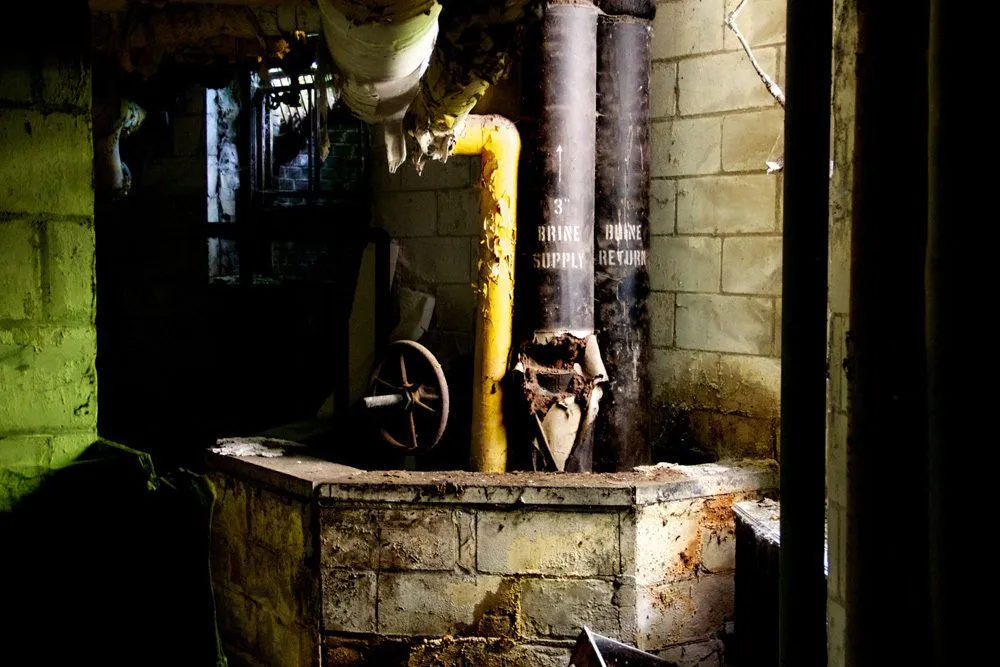
ADVERTISEMENT
While the tale of Typhoid Mary may have put North Brother Island on the map, it would be remiss to mention that not all the buildings were used for their intended purposes. The Tuberculosis Pavilion was built in 1941, but it never treated a single patient suffering from the disease.
ADVERTISEMENT
The island was abandoned before it could be used and those suffering from tuberculosis were moved to different municipal facilities. The tuberculosis hospital was used initially as a dormitory and then became the main residence and treatment building for Riverside Hospital's rehab program.
ADVERTISEMENT
Addiction On North Brother Island
ADVERTISEMENT
ADVERTISEMENT
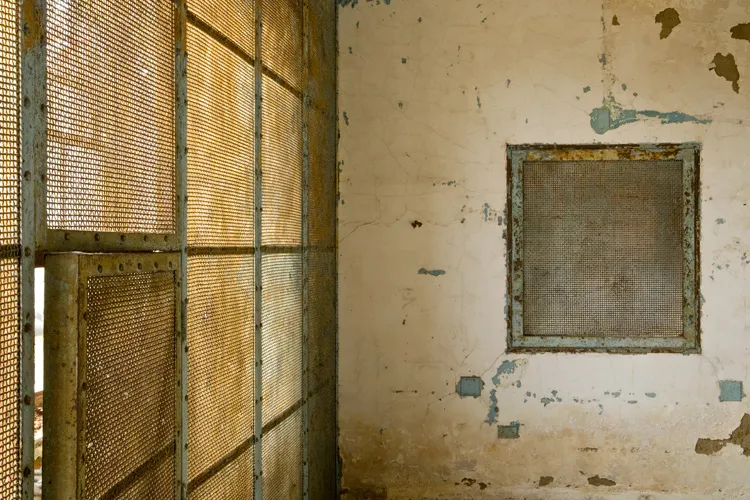
ADVERTISEMENT
The tuberculosis building was never used to treat tuberculosis patients and was instead used for Riverside Hospital's juvenile substance abuse treatment program. It turns out, the building wasn't much suited for rehab. Many of the doors in the building were turned into seclusion rooms with heavy deadbolts and sheet metal reinforcement. This is how they'd treat people going through withdrawal.
ADVERTISEMENT
Addicted patients were locked in a seclusion room given only a bare mattress and a mess bucket. They were forced to go through withdrawal alone, and given no medicine unless the situation was life-threatening. After several days, the withdrawal would be complete, in which case they were thrown back into the general population completely unequipped to handle sobriety.
ADVERTISEMENT
Adapting The Island For Addiction Treatment
ADVERTISEMENT
ADVERTISEMENT
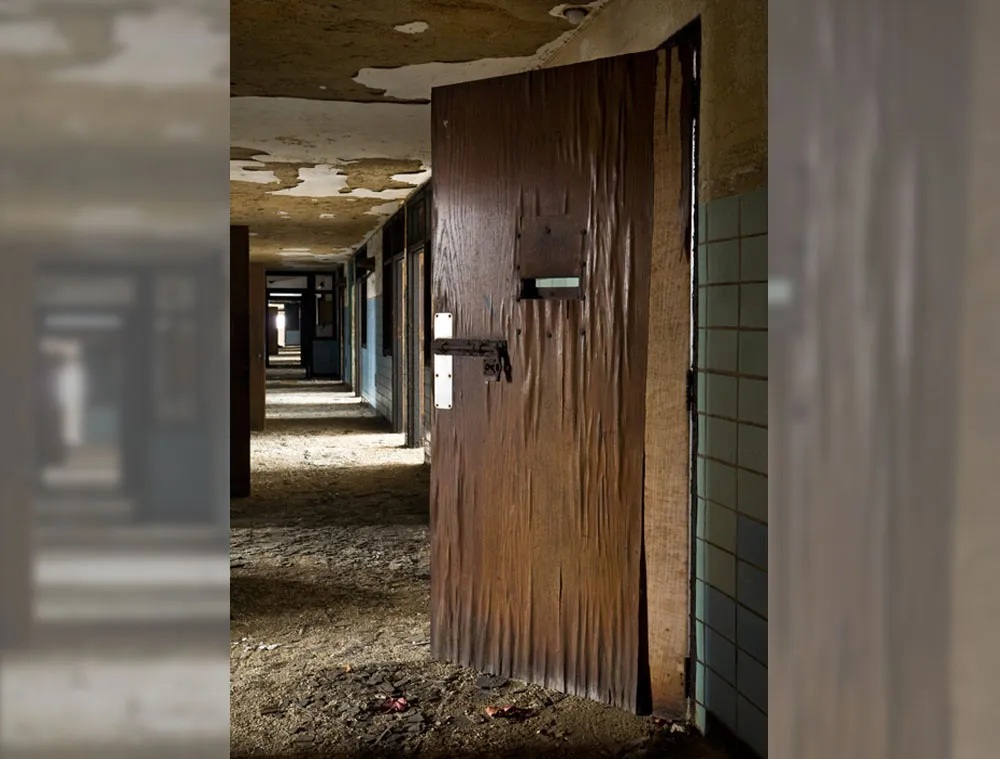
ADVERTISEMENT
Obviously, throwing a recently clean addict back into the general population doesn't really do much to help their plight to stay sober. Eventually, Riverside Hospital realized this and decided the best option for treatment was to keep patients on the island for no less than 90 days.
ADVERTISEMENT
They ended transforming the buildings to suit these juvenile addicts. The services building was turned into a school, the nurses' house became girls' dorms and the original children's ward, which was located next to the tuberculosis pavilion, was turned into a library and annex to the school.
ADVERTISEMENT
Substances Were Still a Major Problem on the Island
ADVERTISEMENT
ADVERTISEMENT
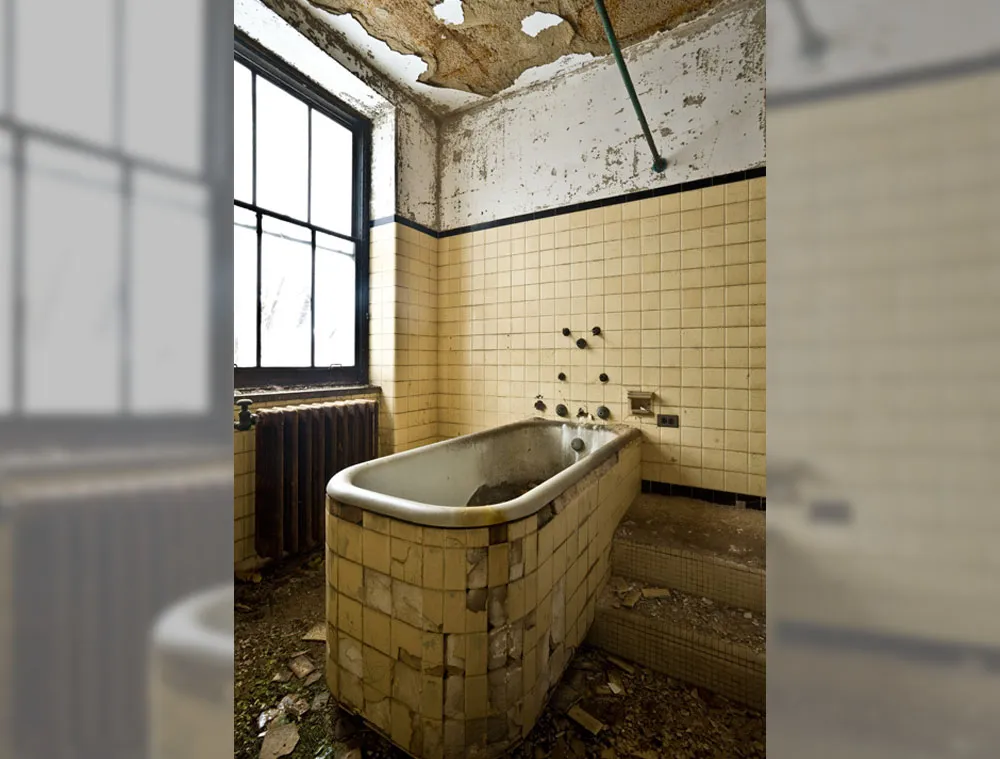
ADVERTISEMENT
With the new buildings in place, the founders of the rehab program were very optimistic about the effectiveness of treatment. Unfortunately, relapse rates were extremely high and patients were using narcotics on the island and inside of the very hospital where they were being treated.
ADVERTISEMENT
There are numerous reports of people traveling to the island in the middle of the night to smuggle in goods for their friends and significant others in rehab. There were also accounts of orderlies sneaking substances in on the ferries in exchange for cigarettes. There were also various accounts of abuse on and by the patients. For this reason, Riverside was shuttered completely.
ADVERTISEMENT
The Morgue
ADVERTISEMENT
ADVERTISEMENT
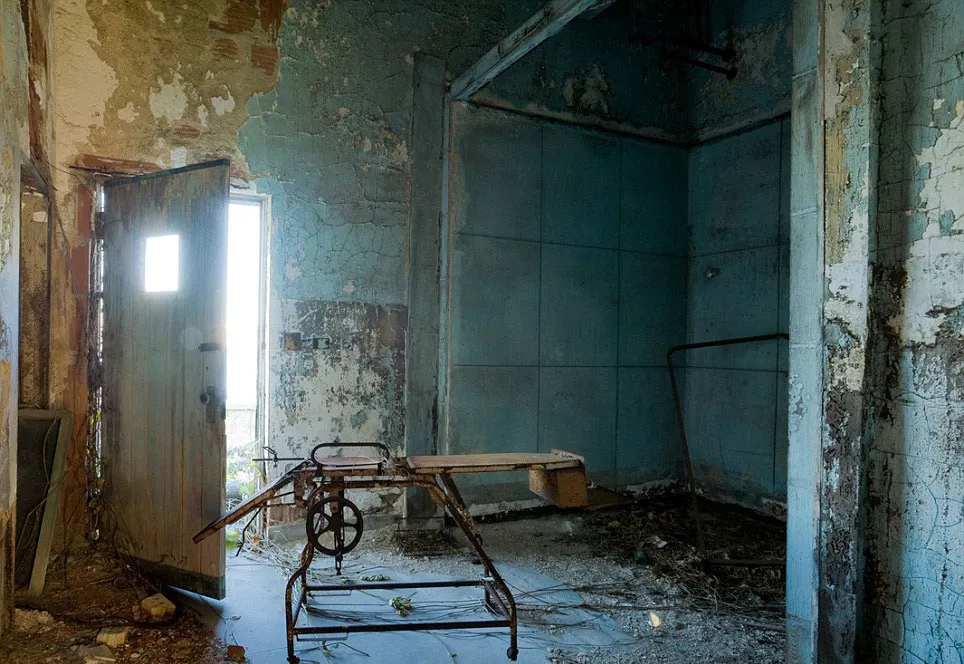
ADVERTISEMENT
The above room served as the refrigeration room in the morgue for Riverside Hospital. This was in the same building where Typhoid Mary studied to become a pathological assistant. Upon her death, she was brought to this very morgue where it was confirmed that she did, in fact, have live typhoid cultures in the gall bladder.
ADVERTISEMENT
The morgue was located next to the physical plant, and the exterior remains in almost pristine condition. The reason there is an entire refrigeration room is because the morgue did not use individual cabinets for each corpse. The table pictured is an exam table, but not an autopsy table.
ADVERTISEMENT
A Single Hoop
ADVERTISEMENT
ADVERTISEMENT
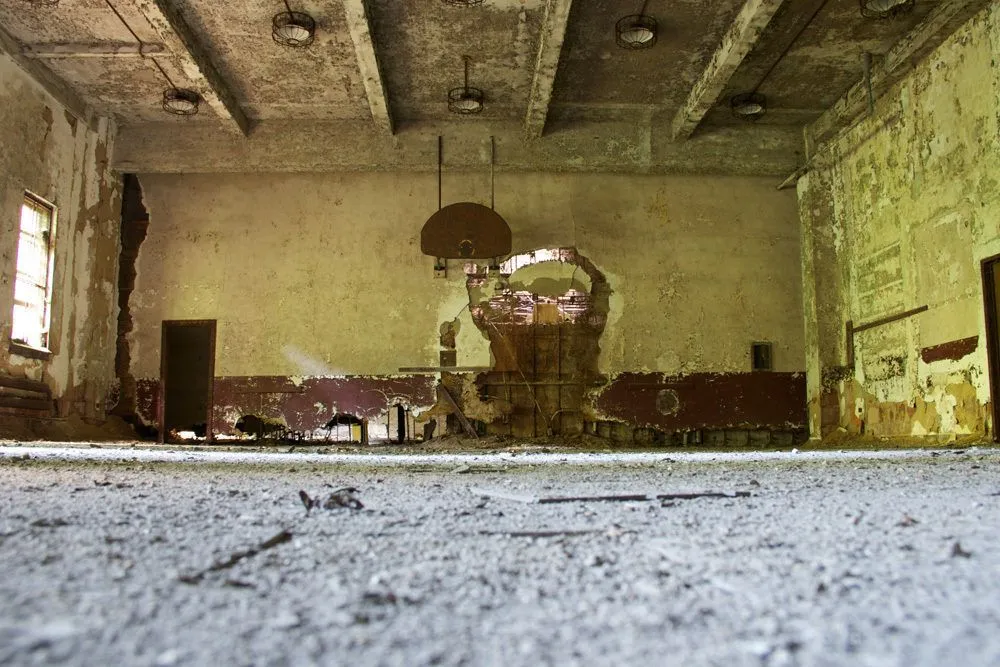
ADVERTISEMENT
In this room we see the remains of a former recreation center. The deteriorating basketball hoop still hangs from the ceiling, where this appears to have been a full court, with another hoop on the opposite side.
ADVERTISEMENT
It was the collective hope of the staff that creating an athletic atmosphere would aide the addiction-riddled population of the community. Just beyond the giant gaping hole in the gym's wall was the lavatory that you can even tell from here has suffered from massive water damage over the years.
ADVERTISEMENT
Patients Were Held Against Their Will
ADVERTISEMENT
ADVERTISEMENT
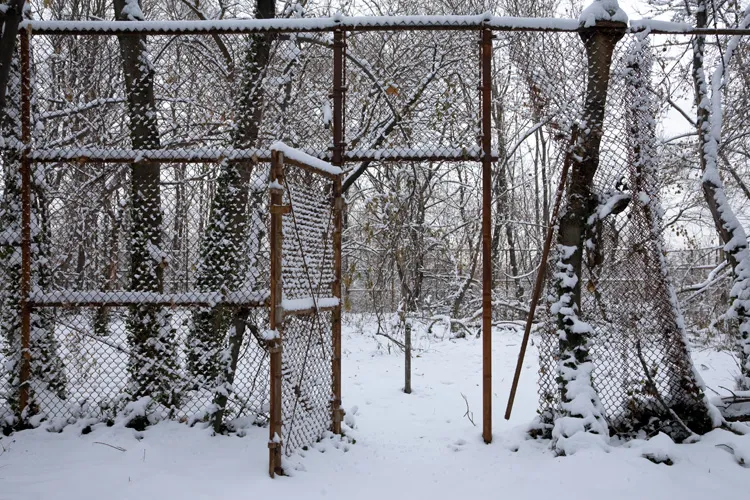
ADVERTISEMENT
A disturbing note was found etched into one of the walls of a seclusion room in the tuberculosis pavilion. It read: "Help I am being held here against my will." The note was most likely the writing of a drug-addicted rehab patient who was confined to a seclusion room to wait out his withdrawals before Riverside's drug program became defunct. His disdain for the facility was not uncommon.
ADVERTISEMENT
One thing almost all patients had in common – from those infected with typhoid, smallpox, and TB to those who were in drug treatment – was that they didn't want to be there. These people were being treated for socially stigmatized diseases and essentially imprisoned on an island.
ADVERTISEMENT
The Boys' Dormitory
ADVERTISEMENT
ADVERTISEMENT
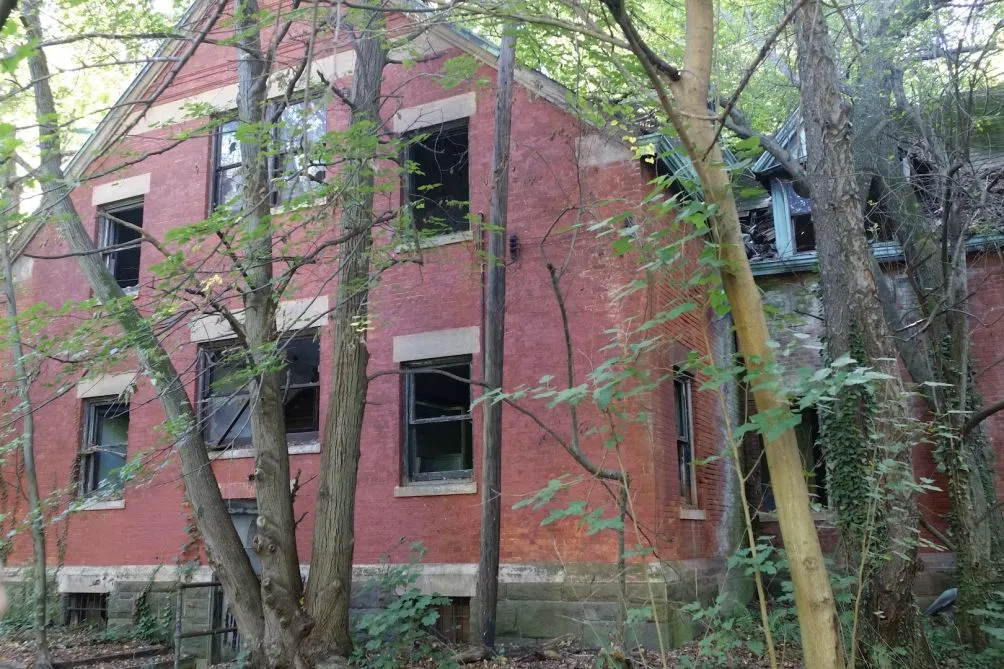
ADVERTISEMENT
The boys' dormitory is one of North Brother Island's oldest buildings. It was built by famed architect Charles Coolidge Haight in 1855 and has managed to stay in relatively great condition. The windows have been blown out by nature, but the brick walls are still standing strong.
ADVERTISEMENT
Currently, the boys' dormitory is one of a handful of buildings being considered for restoration in the future. In the future, city officials hope that the island can become a place of learning where students and groups of people can visit to learn about New York City's history and ecology.
ADVERTISEMENT
The Lack of Docks
ADVERTISEMENT
ADVERTISEMENT
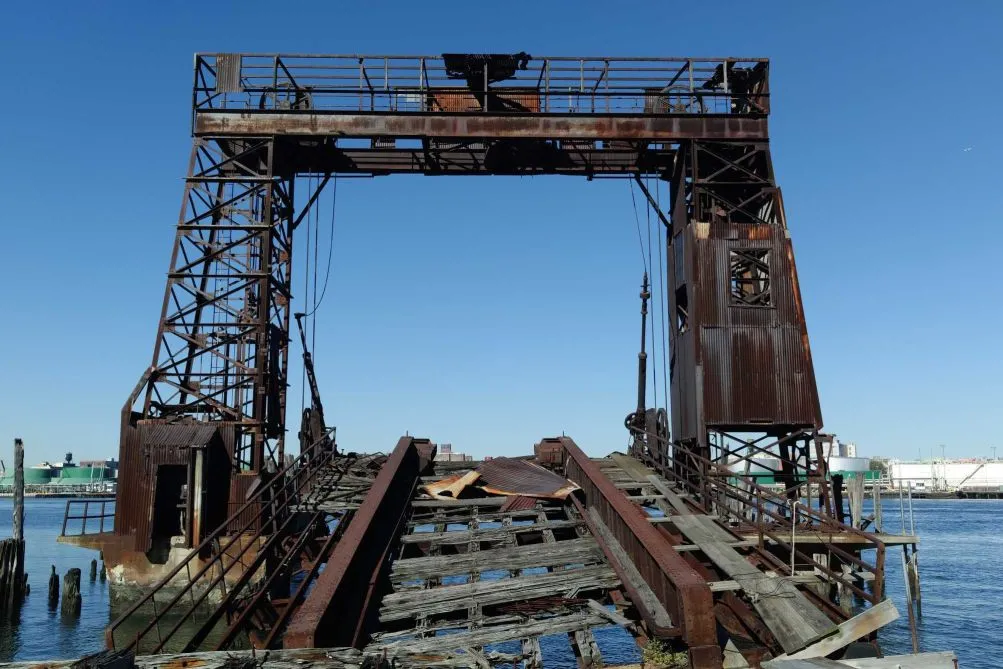
ADVERTISEMENT
Currently, North Brother Island has no docks making it inaccessible to the public. It wasn't always that way. This old gantry would have lifted cargo off boats to get much-needed supplies to the island. It's important to remember that the island was at one point a fully functioning city with cars, roads and tennis courts.
ADVERTISEMENT
City officials are contemplating installing a proper boat landing in the restoration process, in hopes that much of the island will be restored and become a source of tourism within the city. Currently, boats are tied to old pilings near the defunct crane that used to transfer goods from boats to the island.
ADVERTISEMENT
Damage to Smokestacks
ADVERTISEMENT
ADVERTISEMENT
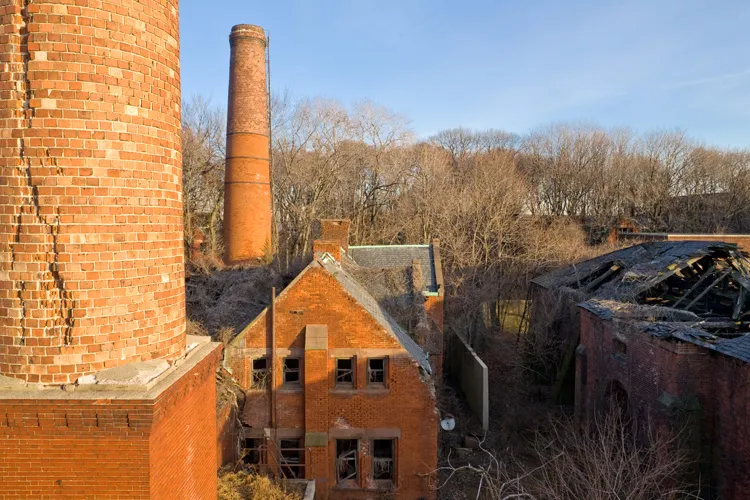
ADVERTISEMENT
While many of the buildings made of bricks stand strong among rotted wood and blown-out windows, the smokestacks are a different story. In the late 1990s, lightning struck the larger smokestack on the island, causing it to shed several feet of bricks. These bricks ended up destroying a portion of the roof of the morgue.The smokestacks from the boiler room remain a hazard to potential visitors.
ADVERTISEMENT
They continuously shed bricks and remain completely unstable. According to John Krawchuk, the executive director of the city Parks Department's Historic House Trust, many of the buildings are so decrepit that they have fallen down fairly recently all within the last few years.
ADVERTISEMENT
Electricity on the Island
ADVERTISEMENT
ADVERTISEMENT
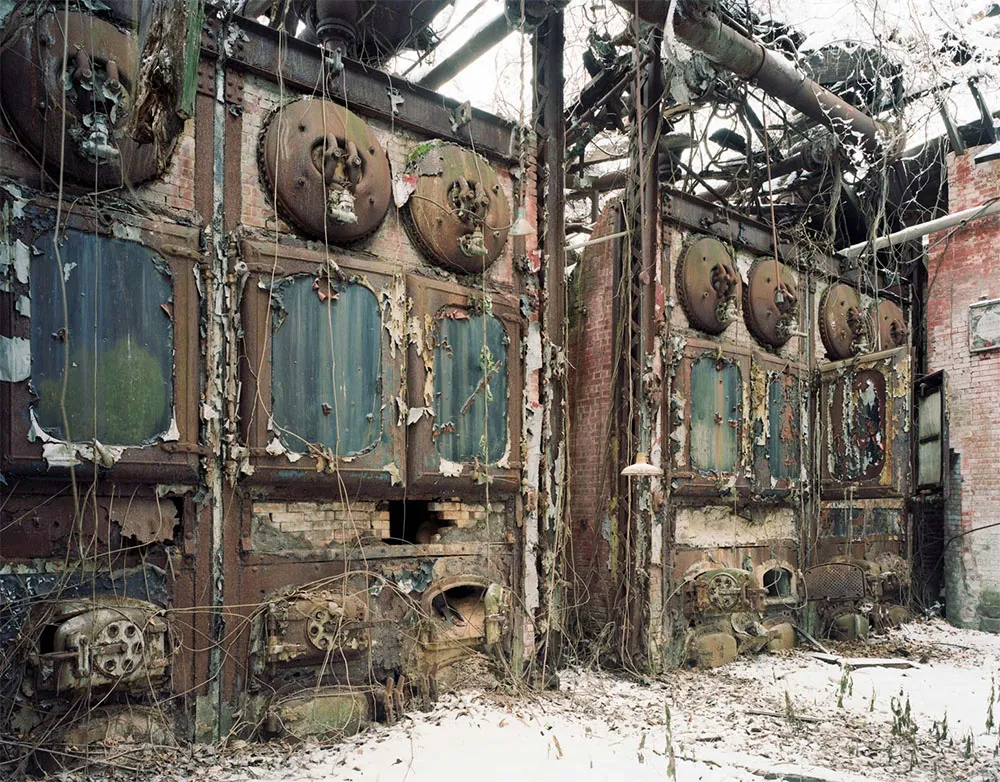
ADVERTISEMENT
North Brother Island was like its own isolated city. It needed food to be brought it by boat and water brought in through a pipeline; however, it was pretty self-sufficient. The island was able to provide steam, electricity and eventually an internal telephone system and electrical fire alarm system.
ADVERTISEMENT
The physical plant made all of this a possibility and powered the island with coal which was stored in a building south of the plant. The process was so streamlined that a separate dock was built just so coal could be imported onto the island quickly and conveniently.
ADVERTISEMENT
















